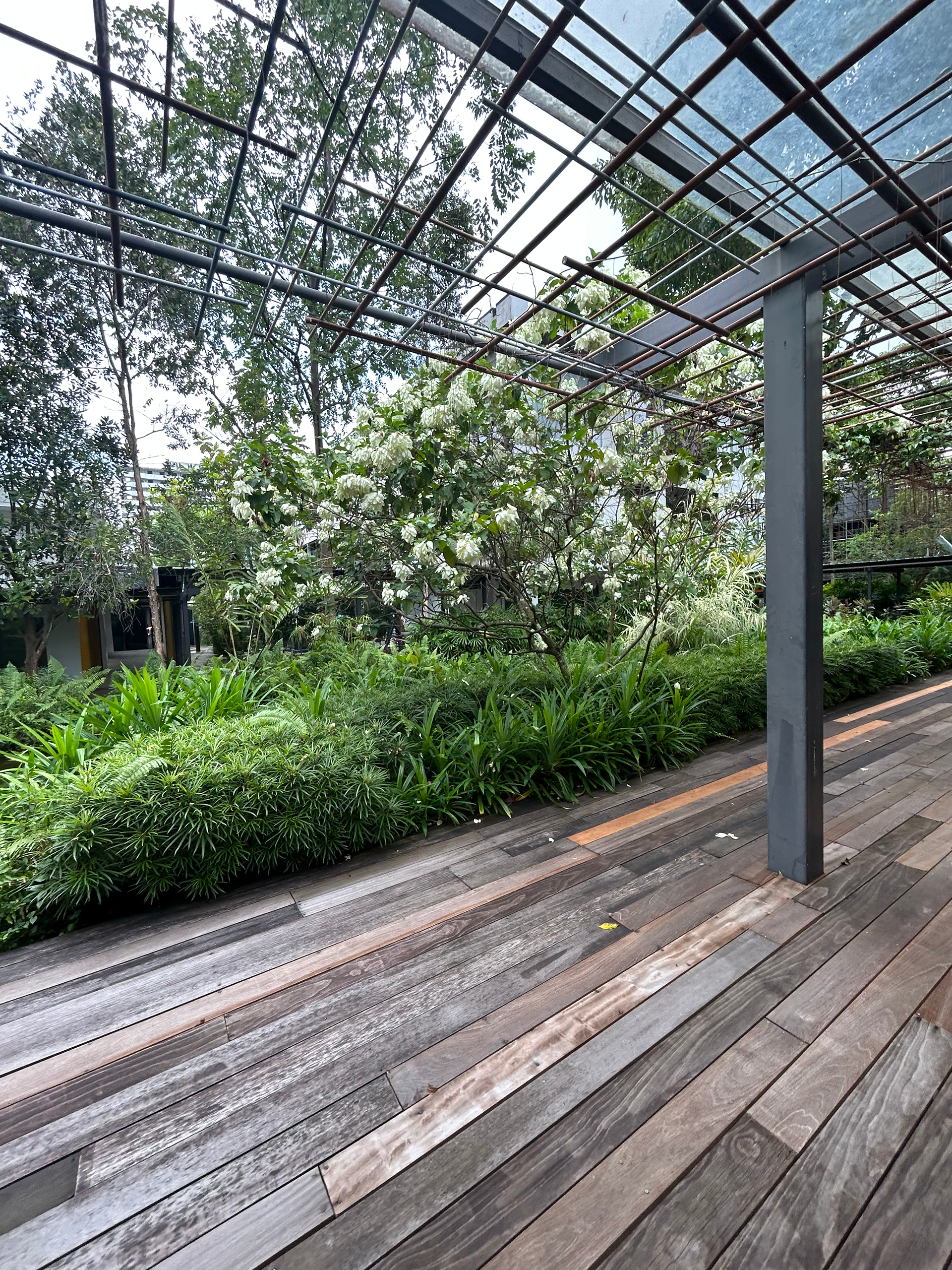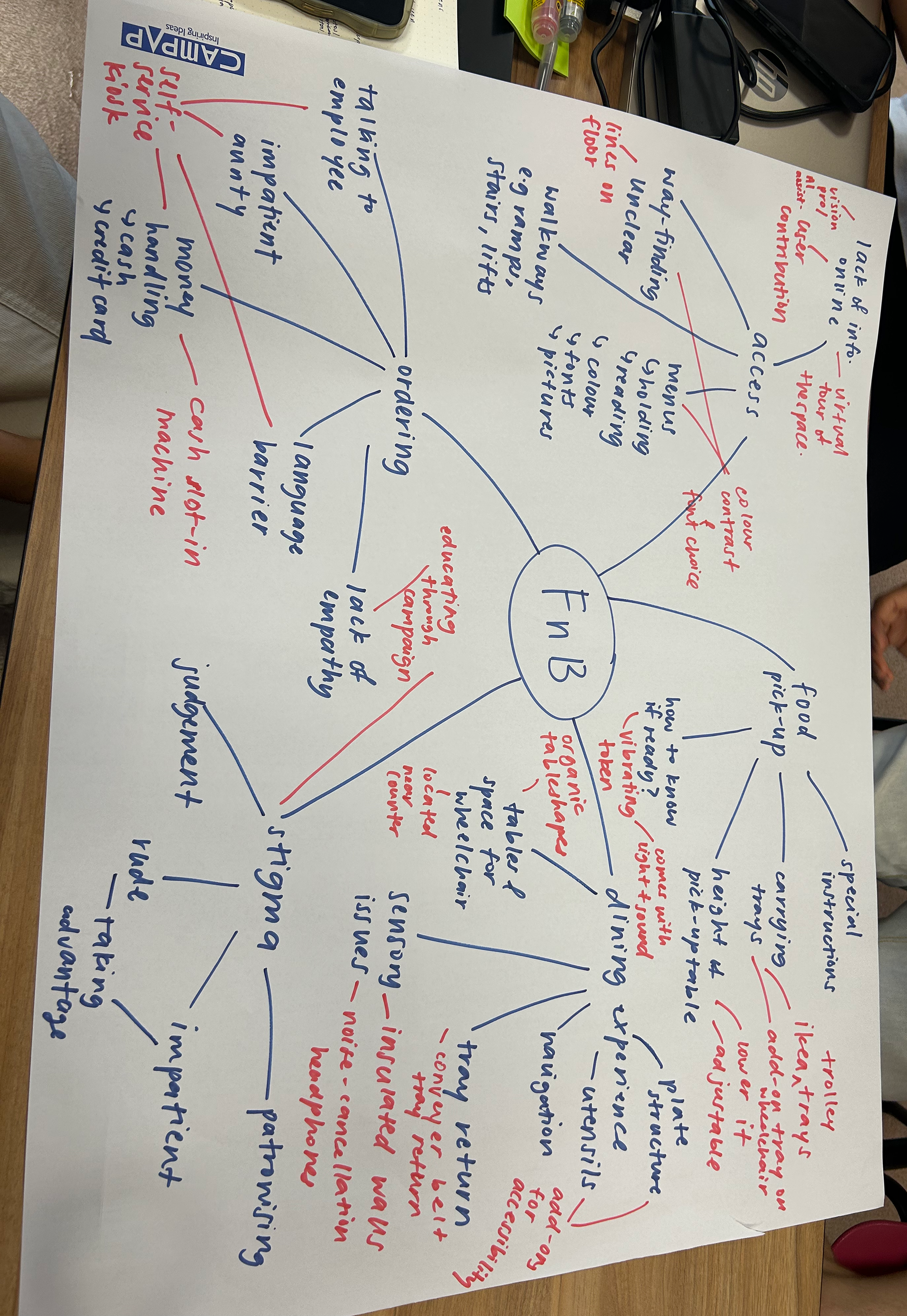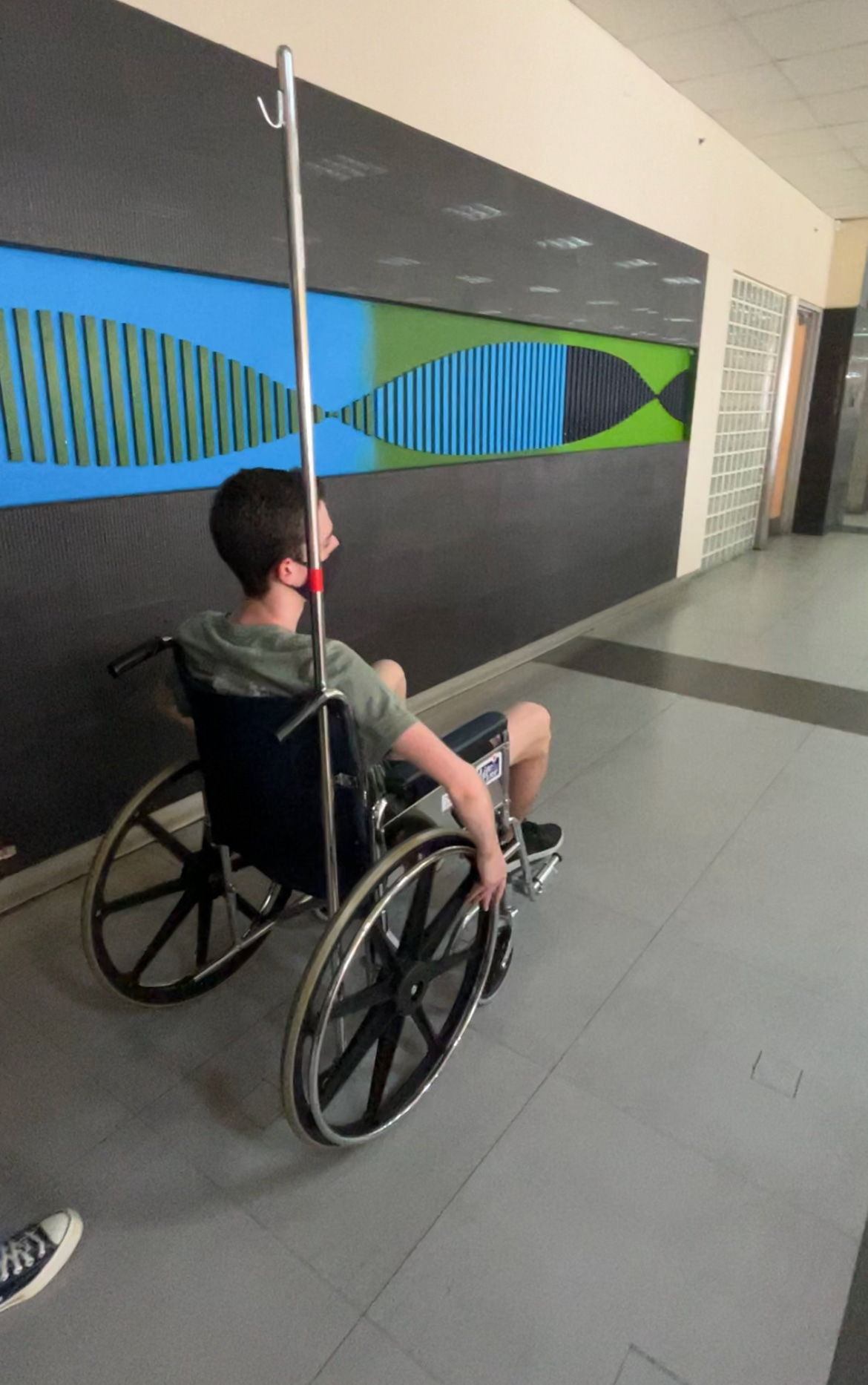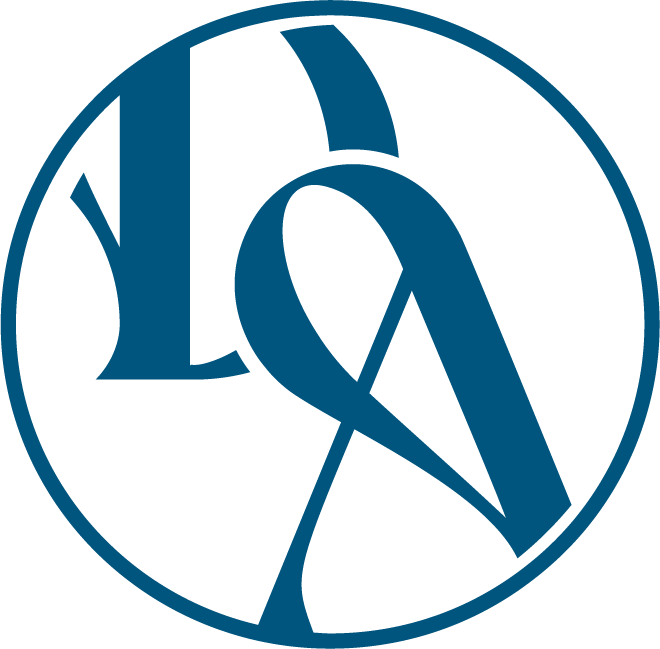The first Monday of the tour, class began at Nanyang Polytechnic, and we were introduced to our group members who we would work with for the rest of the week. Our topic was Food and Beverages. Firstly, we went to Enabling Village to gain inspiration on how to design for inclusivity, catering for a variety of needs. The village provides an outlet for artists with diverse abilities to express their creativity and share it with others. There is a job training centre for persons with autism and many other services that aim to pave a way for those with disabilities. Enabling Village incorporates universal design principles, making it accessible to everyone. It features barrier-free pathways, wheelchair ramps, tactile guide paths, and accessible restrooms to ensure ease of navigation for individuals with different mobility needs.
The Enabling Village serves as a testament to Singapore's commitment to inclusivity and creating a society where persons with disabilities can lead fulfilling lives. It provides a platform for collaboration, support, and empowerment, and promotes awareness and acceptance of individuals with disabilities in the broader community.
We were introduced to various small innovations that aim to make daily tasks easier for persons with disabilities. For example, the robotic self-stabilising spoon for Parkinson patients to allow them to eat without a struggle.
Our next stop was to visit the ‘smart room’ which is an internal space that is elderly and dementia- inclusive. To cater for the elderly, the design includes the installation of ramps, handrails, and accessible facilities to facilitate easy movement and navigation.
Way-finding is designed to cater for Dementia patients by use of clear signage, color-coded pathways, and uncluttered spaces to reduce confusion and anxiety. Some of the innovations that caught my eye were the height-adjustable shelves in the kitchen cabinet and the closet. This caters for an elderly wheelchair user as they can easily pull down the shelf using a lever to reach the top shelf. It is a simple but effective technology.
We were then introduced to the Maker’s Space where we could create physical prototypes of the solutions if we desired. It was amazing to see all the equipment and resources available to the students.




The next day we went back to Nanyang polytechnic to begin the research phase. We were tasked with an empathy task that involved placing ourselves into the shoes of people with different disabilities and experiencing an event relevant to our topic. To maximise our insights, my group decided that everyone will take on one disability while trying to order at the south canteen / hawker centre at the University. My disability was being a one-arm amputee which I performed by only allowing myself to only use one arm while placing the other behind my back.
One team member was in a wheelchair, another pretended to be mute. One person took their glasses off to simulate being visually impaired. This task allowed us to experience a variety of difficulties when ordering food due to disability – most of these difficulties are things people don’t really think twice about, due to them being simple tasks. This includes the inability to reach the juice on the top shelf due to being restrained by the wheelchair, or inability to read the menu because of visual impairment, or struggle to pull out cash due to only having one arm or experiencing communication issues because of inability to speak.
We were also able to introduce a wheelchair user who was a the south canteen at the time. The interview provided us with the insight that it is hard to be independent at Hawker centres especially during peak hours – the interviewee has difficulty ordering at the counter but also having to pick up their food, balancing the tray on their lap then proceeding to try to find an empty table without many chairs that may block their way.
Using our insights, we created a journey map for the disabilities and compiled our insights into a mind map to conceptualise the problems and identify possible ways of fixing them.
The next day was about prototyping. In our team we had two visual communications design students (Including myself), an interaction design student, industrial design, animation student and two nursing students. It was an overwhelming process finding a starting point in the prototyping stage as everyone had different specialties. Nevertheless, it was a great mix of specialties and we wanted to come up with something that everyone could contribute to.
From our mind map, we gathered that the process of having food at hawker centre or any food court for that matter was filled with difficulties for people with disabilities, from beginning to end. Initially, we were going to focus on the ordering stage of the process, however the rest of the experience aka dining in and eating the food also proved to be difficult. We decided we were going to find a holistic solution to ease the entire process. Our problem statement became: How might we make the ordering and dining-in experience more accessible & convenient for people with physical disabilities in Singapore’s hawker centres?
One of our first ideas was an attachable tray for wheelchair users which can be bound to the handles for when the use is about to pick up their order and dine in. however, this solution was not universal as it was restricted to only wheelchair users. Here, we learnt that an effective design is one that is accessible to everyone.
It was difficult coming up with things that don’t already exist. Our other option was to rework an already existing product so that it would solve the given problem; this is what we ended up doing. The final idea was to create a self-serve kiosk that is height adjustable and tilt-able to cater for the needs of wheelchair users while maintaining its usability by able-bodied persons of all heights. Within this design we also included out original idea of attachable trays which are available at the kiosks. We also came up with a priority seating system where tables would be reserved for those with physical disabilities through the brand’s sticker. In this way we tried to tackle all the stages of the problem and not just one.


